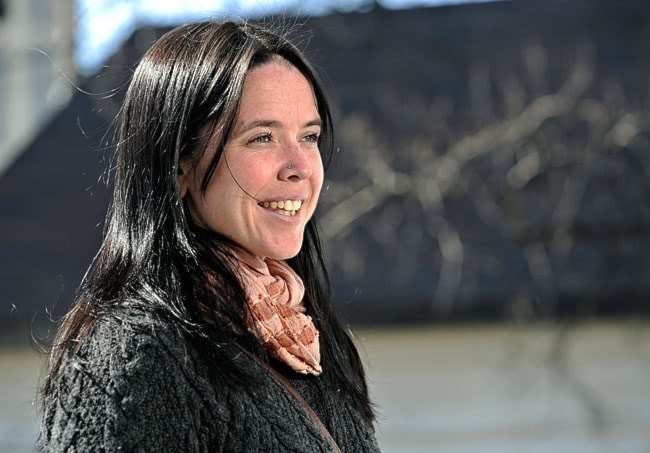Kathleen Cranfield is flying to Ontario today.
The trip is making history.
It is the first time the Canadian Association of Midwives has ever had a representative from the Yukon.
It is also the first time the association’s annual conference will be joined by the Midwives Alliance of North America, which is the mirror organization for the United States.
For midwives, this is a big deal.
But for Cranfield, it’s also a big concern.
She has been asked to give a 10-minute presentation about midwifery in the Yukon.
But she doesn’t know what to say.
The Yukon and PEI are the only two jurisdictions in Canada that have not committed to working towards regulating the industry.
Without such rules, midwives have no hospital rights, meaning they cannot order tests, like blood work and ultrasounds, and they are not covered by the health-care system.
If women in the Yukon want to give birth with a midwife, they have to pay around $3,000 out of their own pockets.
And, despite the fact the territorial government began looking into the issue in 2007 and conducted public consultation in 2010, the Yukon is no closer to deciding whether it will regulate the ancient profession, or not.
Already aware of this weekend’s conference, Cranfield organized a march for midwives in Whitehorse at the end of April, in the hope of pushing the government to make a decision.
The rally was well attended, and within 24 hours Cranfield had 200 signatures on a petition. She attached it to evidence of midwifery’s positive benefits to health care, and hand delivered it to then Health minister Glenn Hart’s office.
“I haven’t had the pleasure of meeting Glenn,” she said.
And she never heard whether he received the package.
So she sent him an email in May.
She still hasn’t heard anything.
Even the Canadian Association of Midwives has contacted the department, to no avail, said Cranfield.
Two weeks ago, Cranfield had a brief appointment with Pat Living, the department’s spokesperson.
“The recommendations from the midwifery consultation are with the deputy minister and he has committed to presenting them to the new minister as early as possible,” said Living.
In other words, nothing has changed.
“I can’t do this much longer,” said Cranfield.
Cranfield wants to permanently move to the territory, but money is running out.
For her to keep her registration with the College of Midwives of British Columbia, she has to deliver a minimum number of regulated births per year.
She also must deliver a number of regulated homebirths per year - a highly polarized issue in the territory’s medical community.
To do either of these, she must go Outside.
And Cranfield does not want to lose her college registration, because if the territory does, eventually, regulate the profession, she will probably need it to be considered.
And the prospect of going back and paying for years of school and a practicum that she has already completed is not realistic.
But neither is her current work schedule.
This summer, she flew to Fort Smith, NWT and Nunavik, Quebec, to work for months at a time.
In both places, she was at the forefront of the profession.
For the isolated Inuit in Nunavik, bringing birth back into the communities has been hugely empowering for largely devastated and vulnerable female populations, said Cranfield. Now, 80 per cent of all births in Nunavik are done with midwives, the health centres’ maternity care is led by midwives and the $3,000 that would have been spent to fly women to hospitals in Montreal, is saved.
During her stay there, Cranfield not only worked as a midwife, but helped train midwifery students.
In the Northwest Territories, Cranfield has been hired as a clinical expert to find the best way to expand the industry to make it sustainable within the existing health-care system, she said.
But in Niagara on Sunday, she can’t talk about either of these groundbreaking experiences.
She has to talk about the Yukon.
A place where, after four years, the government sill can’t decide if they will or will not enact regulations.
A place where no new midwives can move because there is no professional mobility to this territory, because there are no job descriptions and because they will most likely go broke if they do, added Cranfield.
Even once the government decides to pass regulations - if it does - it will still take at least two years to write them, she added.
“Meanwhile,” she said. “What am I supposed to do?”
Cranfield is encouraging the public to send letters to the department and the new Minister of Health and Social Services in hopes of pushing work already completed to the top of their lists.
Contact Roxanne Stasyszyn at
roxannes@yukon-news.com
